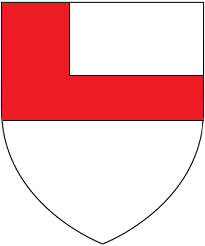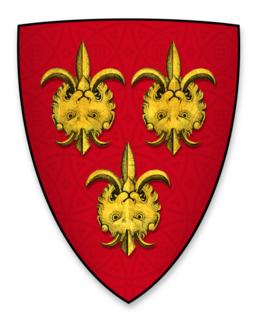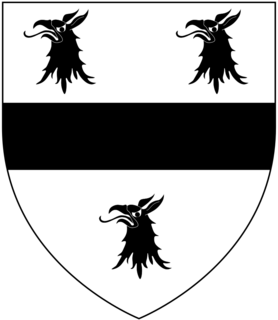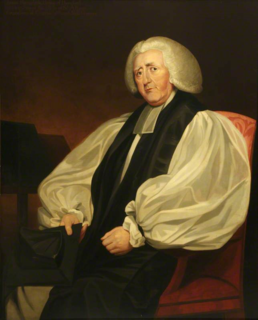Edmund Lacey | |
|---|---|
| Bishop of Exeter | |
 Arms of Bishop Edmund Lacy: Azure, three shoveler's heads erased argent [1] | |
| Appointed | 15 July 1420 |
| Term ended | 18 September 1455 |
| Predecessor | John Catterick |
| Successor | John Hales |
| Orders | |
| Consecration | 18 July 1417 |
| Personal details | |
| Died | 18 September 1455 |
| Denomination | Catholic |
| Previous post(s) | Bishop of Hereford |

Edmund Lacey (or Lacy; died 1455) was a medieval Bishop of Hereford and Bishop of Exeter in England.
Lacey was educated at University College, Oxford, where he was a mature commoner, then Fellow, and subsequently Master of the College from 1398 until around 1401. [2] The College prospered and developed under him, as well as under John Appleton and John Castell who followed him. [3]
In 1401, Lacey was appointed Canon of the ninth stall at St George's Chapel, Windsor Castle, a position he held until 1417. [4]
Around 1414, Lacey was appointed Dean of the Chapel Royal, accompanying King Henry V to the Battle of Agincourt in 1415. [5] He was elected to the see of Hereford between 21 January and 17 February 1417 and consecrated on 18 April 1417. [6] He was then translated to the see of Exeter on 15 July 1420. [7] While bishop at Exeter, Lacey promoted the cult of the Archangel Raphael, proclaiming the feast in his diocese in 1443, and working throughout England to institute the cult. [8]
Lacey died on 18 September 1455. [7] His executors appear as John Cobethorn, Henry Webber, John Germyn and John Burnebyry, all church officials, in 1460; [9]










